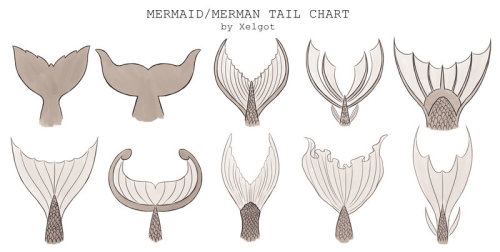Imperial Guard Officer Horse Grenadier Sword







Imperial Guard Officer Horse Grenadier Sword
Dated: 1811
Maker: Lefevbre Paris
Culture: French
Measurements: overall length 1.17m; weight 1.964kg; weight without scabbard 1.28kg
The sword features a brass and leather scabbard similar to the second model for the Horse Grenadier troop sword. This particular model could have also belonged to the Empress’s Dragoons or to an officer of the Cuirassiers since the steel blade is straight and not curved. In any case it did belong to an Heavy Cavalry Officer from Napoléon Army. It is marked with the manufacturer’s name “Lefevbre Paris”, while the scabbard tip is marked "ND”.
Source: Copyright © 2016 Sword Collection
More Posts from Zelo-ref and Others

Evening dress, 1907-08
From the Muzej za umjetnost i obrt, Zagreb








A compilation of snow/winter gifs. Here are similar compilations featured on @sixpenceee you may enjoy:
Compilation of Calming/Floral Gifs
Compilation of Landscape/Nature Gifs
Compilation of Space/Sky Gifs
Compilation of Pixel Art
Compilation of Cute Transparent Pixels
Compilation of Creepy Pixel Art
I LOVE this fashion, but do you know of any ways this style can be incorporated into a more modern way...?

Great question! First of all, I’d like to point out that wearing hanfu does not require fancy hair, makeup, or accessories - it can be worn casually as you would any other clothing.
That said, there are many ways to incorporate hanfu styles in a more “modern” flavor. You can always mix-and-match hanfu separates into your usual wardrobe. There’s also an entire offshoot of hanfu called “hanyuansu/汉元素”, which refers to designs that utilize elements from traditional hanfu. Here are some of my suggestions/inspiration for incorporating hanfu style:
1) Shortening sleeves and/or hemlines can produce a more “modern” look.

2) Layer on a Beizi/褙子 (jacket) - Beizi are extremely versatile, and come in all lengths and materials, for all seasons. (note: the pics below are “hanyuansu”; real hanfu doesn’t have modern pockets)

3) Put on a Banbi/半臂 (half-sleeve jacket) or Bijia/比甲 (sleeveless jacket) - Similar to Beizi, but with shorter/no sleeves, these can be worn like cardigans/t-shirts/vests. 1st row: banbi, 2nd row: bijia.


4) Hanfu skirts - Try wearing a hanfu skirt with your outfit. Left: Ming Dynasty-style, Right: Tang Dynasty-style.

5) Song-style pants/宋裤 - These pants were popular with women during the Song Dynasty. Try adding them to your outfit. (note: the right pic is a modified, “shorts” version)

6) Doupeng/斗篷 (cloaks/capes) make a nice accessory during the colder months, and come in various lengths and designs.

These are only just a few ways to incorporate hanfu elements; there are a lot more ideas and designs out there. I hope this helps in providing inspiration :)
(edit: links to clothing are in this post)
How To Shade
a quick tutorial on shading (with graphite) by yours truly. this is the process I use for shading, and there are tons more out there if this one doesn’t work for you.
MATERIALS USED

1 HB graphite pencil
1 2B graphite pencil
1 4B graphite pencil
1 blending stub (the bigger the better)
1 plastic eraser (white)
1 kneaded eraser (grey)
now why do I use two erasers? well, they’re very different from one another, and each serves their own purpose.
the plastic eraser is harder, and when it erases, it erases everything. the kneaded eraser is soft, and it doesn’t completely erase everything all at once. you can use it to pick up some of the graphite and leave some behind, lightening (but not totally erasing) your shading. plus, the kneaded eraser is so soft you can mold it, and it doesn’t leave pencil shavings. if one end gets too used, you can just stretch it out, and it’s as good as new.
REFERENCE USED

now lets get this started, shall we?
STEP ONE
scribble lightly over your drawing with either an HB (aka a regular #2 pencil) or 2B pencil. you don’t have to be extremely neat, but do it light and nice enough so it can still be erased/you can still see the original lines underneath.

STEP TWO
take your blending stub (the wider the better, and if you don’t have one, use a tissue) and rub in the opposite direction of the scribbling. don’t press too hard, because it might streak/not work if you do.


STEP THREE
erase the extra shading around the edges (using the plastic eraser.).

STEP FOUR
roughly add your darks

STEP FIVE
roughly add your lights by erasing with the kneaded eraser

STEP SIX
add your finishing touches (secondary shadows, background, etc)

(I reshaped the sides, added more lights, and added the background shadow)
and voila! you just did some shading!
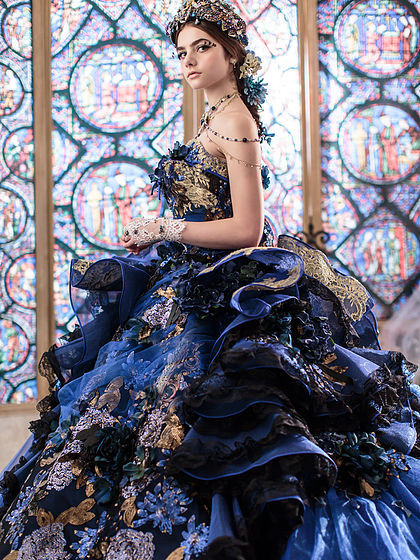
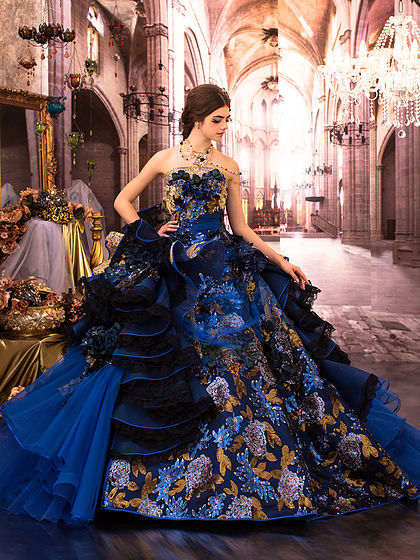

I've been thinking about this for a while, but how effective is full plate armour? Was it actually a good way to defend yourself?
Short Answer: Yes.
Here’s a general rule: People in the past were ignorant about a lot of things, but they weren’t stupid. If they used something, chances are they had a good reason. There are exceptions, but plate armor is not one of them.
Long Answer:
For a type of armor, no matter what it is, to be considered effective, it has to meet three criteria.
The three criteria are: Economic Efficiency, Protectiveness, and Mobility.
1. Is it Economically Efficient?
Because of the nature of society in the Middle Ages, what with equipment being largely bring-it-yourself when it came to anybody besides arrowfodder infantry who’d been given one week of training, economic efficiency was a problem for the first couple of decades after plate armor was introduced in France in the 1360s. It wasn’t easy to make, and there wasn’t really a ‘science’ to it yet, so only the wealthiest of French soldiers, meaning knights and above, had it; unless of course somebody stole it off a dead French noble. The Hundred Years War was in full swing at the time, and the French were losing badly to the English and their powerful longbows, so there were plenty of dead French nobles and knights to go around. That plate armor was not very economically efficient for you unless you were a rich man, though, it also was not exactly what we would call “full” plate armor.

Above: Early plate armor, like that used by knights and above during the later 1300s and early 1400s.


Above: Two examples of what most people mean when they say “full” plate armor, which would have been seen in the mid to late 1400s and early 1500s.
Disclaimer: These are just examples. No two suits of armor were the same because they weren’t mass-produced, and there was not really a year when everybody decided to all switch to the next evolution of plate armor. In fact it would not be improbably to see all three of these suits on the same battlefield, as expensive armor was often passed down from father to son and used for many decades.
Just like any new technology, however, as production methods improved, the product got cheaper.

Above: The Battle of Barnet, 1471, in which everybody had plate armor because it’s affordable by then.
So if we’re talking about the mid to late 1400s, which is when our modern image of the “knight in shining armor” sort of comes from, then yes, “full” plate armor is economically efficient. It still wasn’t cheap, but neither are modern day cars, and yet they’re everywhere. Also similar to cars, plate armor is durable enough to be passed down in families for generations, and after the Hundred Years War ended in 1453, there was a lot of used military equipment on sale for cheap.
2. Is it Protective?
This is a hard question to answer, particularly because no armor is perfect, and as soon as a new, seemingly ‘perfect’ type of armor appears, weapons and techniques adapt to kill the wearer anyway, and the other way around. Early plate armor was invented as a response to the extreme armor-piercing ability of the English longbow, the armor-piercing ability of a new kind of crossbow, and advancements in arrowhead technology.

Above: The old kind of arrowhead, ineffective against most armor.

Above: The new kind of arrowhead, very effective at piercing chainmaille and able to pierce plate armor if launched with enough power.

Above: An arrow shot from a “short” bow with the armor-piercing tip(I think it’s called a bodkin tip) piercing a shirt of chainmaille. However, the target likely would have survived since soldiers wore protective layers of padding underneath their armor, so if the arrow penetrated skin at all, it wasn’t deep. That’s Terry Jones in the background.

Above: A crossbow bolt with the armor piercing tip penetrating deep through the same shirt of chainmaille. The target would likely not survive.

Above: A crossbow bolt from the same crossbow glancing off a breastplate, demonstrating that it was in fact an improvement over wearing just chainmaille.
Unfortunately it didn’t help at all against the powerful English longbows at close range, but credit to the French for trying. It did at least help against weaker bows.
Now for melee weapons.
It didn’t take long for weapons to evolve to fight this new armor, but rarely was it by way of piercing through it. It was really more so that the same weapons were now being used in new ways to get around the armor.


Above: It’s a popular myth that Medieval swords were dull, but they still couldn’t cut through plate armor, nor could they thrust through it. Your weapon would break before the armor would. Most straight swords could, however, thrust through chainmaille and anything weaker.
There were three general answers to this problem:
1. Be more precise, and thrust through the weak points.


Above: The weak points of a suit of armor. Most of these points would have been covered by chainmaille, leather, thick cloth, or all three, but a sword can thrust through all three so it doesn’t matter.
To achieve the kind of thrusting accuracy needed to penetrate these small gaps, knights would often grip the blade of their sword with one hand and keep the other hand on the grip. This technique was called “half-swording”, and you could lose a finger if you don’t do it right, so don’t try it at home unless you have a thick leather glove to protect you, as most knights did, but it can also be done bare-handed.


Above: Examples of half-swording.
2. Just hit the armor so fucking hard that the force carries through and potentially breaks bones underneath.
Specialty weapons were made for this, but we’ll get to them in a minute. For now I’m still focusing on swords because I like how versatile the European longsword is.

Above: A longsword. They’re made for two-handed use, but they’re light enough to be used effectively in one hand if you’d like to have a shield or your other arm has been injured. Longswords are typically about 75% of the height of their wielders.
Assuming you’re holding the sword pointing towards the sky, the part just above the grip is called the crossguard, and the part just below the grip is called the pommel. If you hold the sword upside-down by the blade, using the same careful gripping techniques as with half-swording, you can strike with either the crossguard or the pommel, effectively turning the sword into a warhammer. This technique was called the Murder Stroke, and direct hits could easily dent plate armor, and leave the man inside bruised, concussed, or with a broken bone.

Above: The Murder Stroke as seen in a Medieval swordfighting manual.
Regular maces, hammers, and other blunt weapons were equally effective if you could get a hard enough hit in without leaving yourself open, but they all suffered from part of the plate armor’s intelligent design. Nearly every part of it was smooth and/or rounded, meaning that it’s very easy for blows to ‘slide’ off, which wastes a lot of their power. This makes it very hard to get a ‘direct’ hit.
Here come the specialized weapons to save the day.

Above: A lucerne, or claw hammer. It’s just one of the specialized weapons, but it encompasses all their shared traits so I’m going to only list it.
These could be one-handed, two-handed, or long polearms, but the general idea was the same. Either crack bones beneath armor with the left part, or penetrate plate armor with the right part. The left part has four ‘prongs’ so that it can ‘grip’ smooth plate armor and keep its force when it hits without glancing off. On the right side it as a super sturdy ‘pick’, which is about the only thing that can penetrate the plate armor itself. On top it has a sharp tip that’s useful for fighting more lightly armored opponents.
3. Force them to the ground and stab them through the visor with a dagger.
This one is pretty self-explanatory. Many conflicts between two armored knights would turn into a wrestling match. Whoever could get the other on the ground had a huge advantage, and could finish his opponent, or force him to surrender, with a dagger.
By now you might be thinking “Dang, full plate armor has a lot of weaknesses, so how can it be called good armor?”
The answer is because, like all armor is supposed to do, it minimizes your target area. If armor is such that your enemy either needs to risk cutting their fingers to target extremely small weak points, bring a specialized weapons designed specifically for your armor, or wrestle you to the ground to defeat you, that’s some damn good armor. So yes, it will protect you pretty well.

Above: The red areas represent the weak points of a man not wearing armor.
Also, before I move on to Mobility, I’m going to talk briefly about a pet-peeve of mine: Boob-plates.
If you’re writing a fantasy book, movie, or video game, and you want it to be realistically themed, don’t give the women boob-shaped armor. It wasn’t done historically even in the few cases when women wore plate armor, and that’s because it isn’t as protective as a smooth, rounded breastplate like you see men wearing. A hit with any weapon between the two ‘boobs’ will hit with its full force rather than glancing off, and that’ll hurt. If you’re not going for a realistic feel, then do whatever you want. Just my advice.

Above: Joan of Arc, wearing properly protective armor.
An exception to this is in ancient times. Female gladiators sometimes wore boob-shaped armor because that was for entertainment and nobody cared if they lived or died. Same with male gladiators. There was also armor shaped like male chests in ancient times, but because men are more flat-chested than women, this caused less of a problem. Smooth, rounded breastplates are still superior, though.
3. Does it allow the wearer to keep his or her freedom of movement?
Okay, I’ve been writing this for like four hours, so thankfully this is the simplest question to answer. There’s a modern myth that plate armor weighed like 700 lbs, and that knights could barely move in it at all, but that isn’t true. On a suit of plate armor from the mid to late 1400s or early 1500s, all the joints are hinged in such a way that they don’t impede your movement very much at all.
The whole suit, including every individual plate, the chainmaille underneath the plates, the thick cloth or leather underneath the chainmaille, and your clothes and underwear all together usually weighed about 45-55 lbs, and because the weight was distributed evenly across your whole body, you’d hardly feel the weight at all. Much heavier suits of armor that did effectively ‘lock’ the wearer in place did exist, but they never saw battlefield use. Instead, they were for showing off at parades and for jousting. Jousting armor was always heavier, thicker, and more stiffly jointed than battlefield armor because the knight only needed to move certain parts of his body, plus being thrown off a horse by a lance–even a wooden one that’s not meant to kill–has a very, very high risk of injury.
Here’s a bunch of .gifs of a guy demonstrating that you can move pretty freely in plate armor.



Above: Can you move in it? Yes.
Here are links to the videos that I made these .gifs from:
https://www.youtube.com/watch?v=vi757-7XD94
https://www.youtube.com/watch?v=NhWFQtzM4r0
https://www.youtube.com/watch?v=5hlIUrd7d1Q
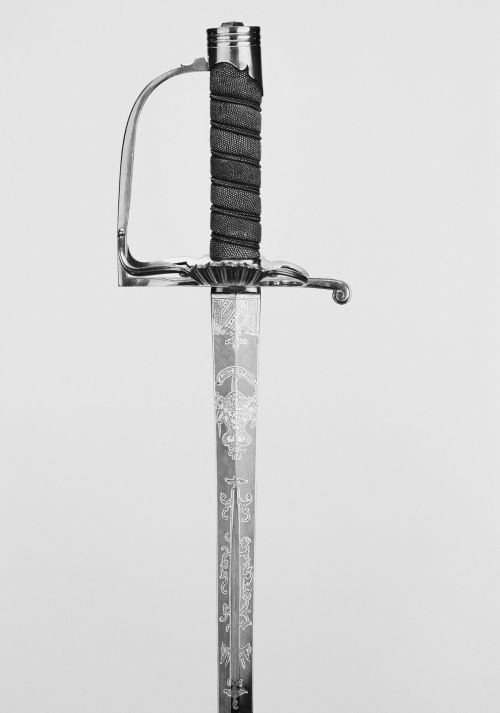

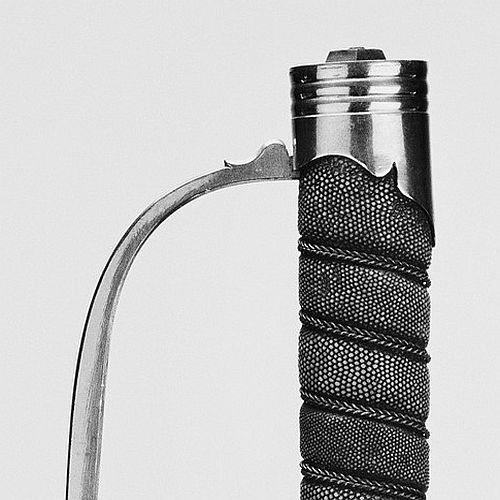
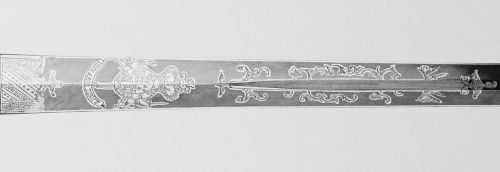
Military Dress Sword
Dated: circa 1787-91
Culture: English
Medium and techniques: gilt brass, wood, fish skin, silver wire, gilt, blued steel/etched
Measurements: overall length 95cm; blade length 62cm
The sword has a gilt/brass hilt with an oval pommel cap. The oval wooden grip is covered in grey fishskin bound with herringbone of silver wire. The straight steel two-edged blade features etched gilt and blued panels decorated with Royal Arms and military trophy.
Source: Copyright © 2016 Royal Collection Trust/Her Majesty Queen Elizabeth II
-
 fantasticempathllamashark liked this · 1 year ago
fantasticempathllamashark liked this · 1 year ago -
 theoldbluerockpalaceshow liked this · 2 years ago
theoldbluerockpalaceshow liked this · 2 years ago -
 sentaco liked this · 2 years ago
sentaco liked this · 2 years ago -
 outsidertrolls reblogged this · 3 years ago
outsidertrolls reblogged this · 3 years ago -
 wholockian221 liked this · 3 years ago
wholockian221 liked this · 3 years ago -
 mikachanlove reblogged this · 3 years ago
mikachanlove reblogged this · 3 years ago -
 mikachanlove liked this · 3 years ago
mikachanlove liked this · 3 years ago -
 cgayle205 reblogged this · 4 years ago
cgayle205 reblogged this · 4 years ago -
 cgayle205 liked this · 4 years ago
cgayle205 liked this · 4 years ago -
 eldrylfa liked this · 4 years ago
eldrylfa liked this · 4 years ago -
 prairiepoppy liked this · 4 years ago
prairiepoppy liked this · 4 years ago -
 vampirehouse reblogged this · 4 years ago
vampirehouse reblogged this · 4 years ago -
 linasdg liked this · 4 years ago
linasdg liked this · 4 years ago -
 mewmewnyaart liked this · 4 years ago
mewmewnyaart liked this · 4 years ago -
 maiarella liked this · 5 years ago
maiarella liked this · 5 years ago -
 michelaes-corner liked this · 5 years ago
michelaes-corner liked this · 5 years ago -
 bisexual-potato-hours liked this · 5 years ago
bisexual-potato-hours liked this · 5 years ago -
 asthro liked this · 6 years ago
asthro liked this · 6 years ago -
 lowflowdeisel liked this · 6 years ago
lowflowdeisel liked this · 6 years ago -
 dptysnuggles liked this · 6 years ago
dptysnuggles liked this · 6 years ago -
 beijingnoodle liked this · 6 years ago
beijingnoodle liked this · 6 years ago -
 fox-of-magic liked this · 6 years ago
fox-of-magic liked this · 6 years ago -
 chigirl05-blog liked this · 7 years ago
chigirl05-blog liked this · 7 years ago -
 ablueeyedarcher liked this · 7 years ago
ablueeyedarcher liked this · 7 years ago -
 acidicafterdark reblogged this · 7 years ago
acidicafterdark reblogged this · 7 years ago -
 acidicafterdark liked this · 7 years ago
acidicafterdark liked this · 7 years ago -
 deadlock liked this · 7 years ago
deadlock liked this · 7 years ago -
 halos-and-sand liked this · 7 years ago
halos-and-sand liked this · 7 years ago -
 rockbellautomation liked this · 7 years ago
rockbellautomation liked this · 7 years ago -
 the-theshiro-123 liked this · 7 years ago
the-theshiro-123 liked this · 7 years ago -
 spitefuldragon liked this · 7 years ago
spitefuldragon liked this · 7 years ago -
 corpseferry liked this · 7 years ago
corpseferry liked this · 7 years ago -
 corviacore liked this · 7 years ago
corviacore liked this · 7 years ago -
 chocolatedeerfestival liked this · 7 years ago
chocolatedeerfestival liked this · 7 years ago -
 yer-banshee reblogged this · 7 years ago
yer-banshee reblogged this · 7 years ago -
 yer-banshee liked this · 7 years ago
yer-banshee liked this · 7 years ago -
 freedom-rookie liked this · 7 years ago
freedom-rookie liked this · 7 years ago -
 land-of-evergreens-and-dye liked this · 7 years ago
land-of-evergreens-and-dye liked this · 7 years ago -
 sirbird liked this · 7 years ago
sirbird liked this · 7 years ago -
 kitty-kat-quinn liked this · 7 years ago
kitty-kat-quinn liked this · 7 years ago
